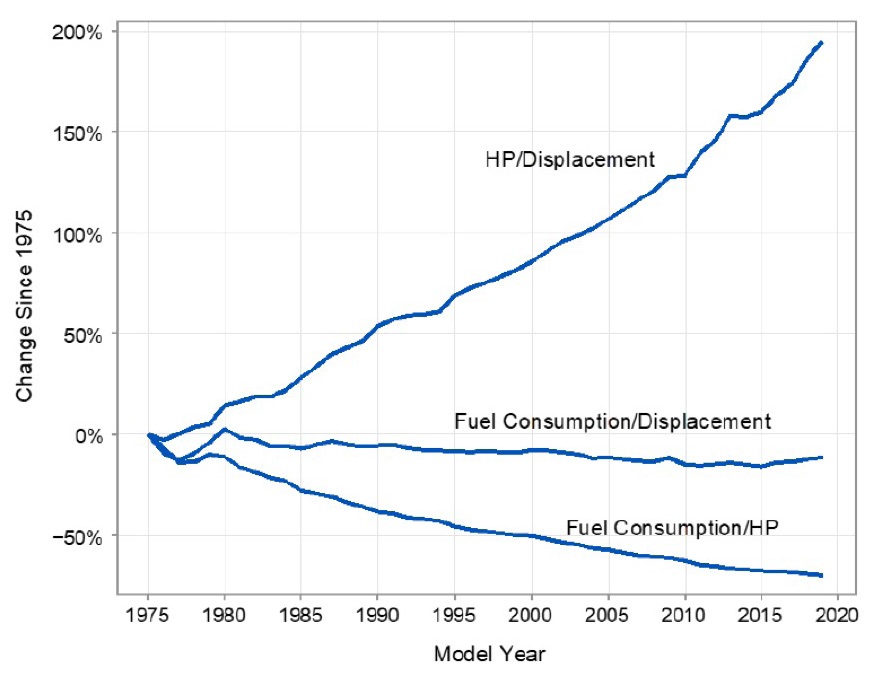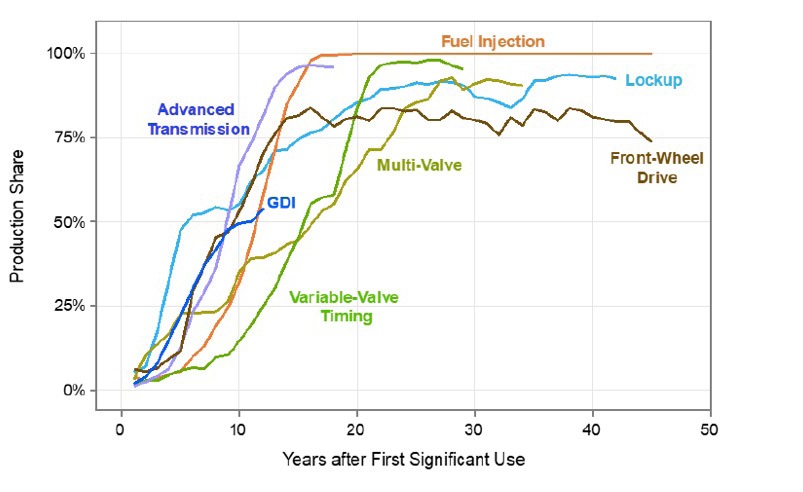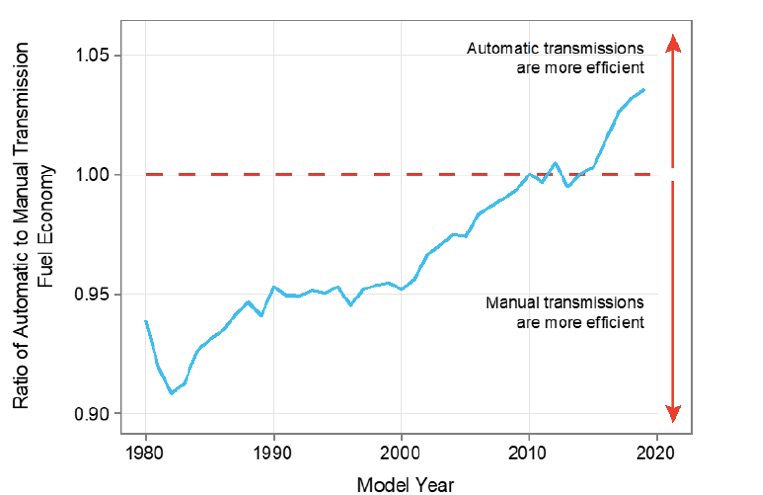In this column, I have cited an annual report from the U.S. Environmental Protection Agency repeatedly. Now titled
Greenhouse Gas Emissions, Fuel Economy and Technology since 1975,
1 the report continues to be a treasure trove of information regarding the developments in automotive propulsion technology. The latest version is now available and has a few surprises.
For the first time, a manufacturer of exclusively electric vehicles is included in the analysis. Tesla sold approximately 190,000 vehicles in 2019, meeting the threshold of at least 150,000 annual sales for inclusion in the report. Also, more of the raw data used to generate the charts and graphs in the report is available for users to access and conduct their own analysis.
Figure 1, for example, shows that the gasoline engine continues to evolve in terms of specific power. Even as engines have gotten smaller, power per unit displacement has increased in a nearly liner fashion. The report goes into detail on some of the technologies that have made these improvements possible, as well as their rates of adoption.
 Figure 1. Percent change for specific gasoline engine metrics.
Figure 1. Percent change for specific gasoline engine metrics.
Figure 2 shows how long some of these technologies took to become the preferred method. In general, once a technology is adopted in 2%-5% of vehicles, that technology reaches 50% market penetration in about 10 years and plateaus after about 20 years. Note that, in 2019, electric vehicles and plug-in hybrids accounted for about 3% of total sales. So, a reasonable projection might be that these vehicles will account for a 50% share by 2030 and will peak around 2040.
 Figure 2. Industry-wide car technology penetration after first significant use.
Figure 2. Industry-wide car technology penetration after first significant use.
Figure 3 has been previously discussed in this column two years ago.
2 At that time, the EPA projected that vehicles equipped with an automatic transmission would have better fuel economy than comparable vehicles equipped with manual transmission. This figure shows that the trend has continued, and the automatic is clearly more efficient. In fact, the manual transmission market share has fallen from around 35% in 1980 to an all-time low of 1.6% in 2018.
 Figure 3. Comparison of manual and automatic transmission real-world fuel economy for comparable vehicles.
Figure 3. Comparison of manual and automatic transmission real-world fuel economy for comparable vehicles.
These improvements in fuel economy also are due to the contributions of automotive tribologists. Automatic transmissions have reached new levels of economy by the addition of more forward gears, in some cases as many as ten forward speed, allowing the engine to operate near its peak efficiency more of the time. These gears require the proper lubricants and also surface textures to assure reliable operation.
Engine oils also have continued to improve, both in terms of additive packages and base oil themselves. In particular, lower viscosity oils have improved engine efficiency. In 1975, automobiles typically used a 10W-40 viscosity grade. New engines are designed for much lower grades, as low as 0W-16. The next generation of engine oils, which will meet the ILSAC GF-6 specification, will be available soon. And it won’t be long before we start hearing about GF-7.
REFERENCES
1.
U.S. Environmental Protection Agency Report EPA-420-R-20- 006, “Greenhouse Gas Emissions, Fuel Economy and Technology since 1975,” March 2020, click
here.
2.
Becker, E. (2018), “The mileage gap’s upset victor,” TLT,
74 (6), p. 120.